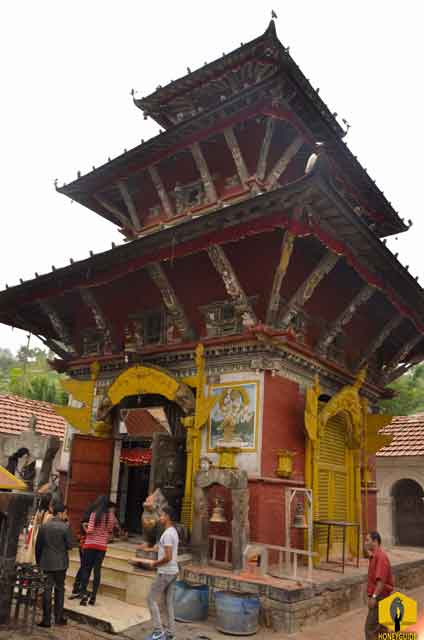Mythological background unfolds the story of the emergence of Jal Binayak, a stone image of Ganesh near the Chobar Gorge. Long back, when Manjushree knew that Swayambhu had manifested itself at Nagabasa Daha, he came on a pilgrimage to the holy lake from the Mountain of Five Peaks, in China. The Swayambhu (self-created one), was a beautiful flaming lotus with over hundred petals was surrounded by water in the Lake. He decided to drain the lake to reach the island hill-top. Folklore says that Lord Ganesh stood guard at the point to prevent sacred Nagas (serpents responsible for creating rain) from escaping after Manjushree drained the lake; also responsible for protecting Nags who took refuge in Taudaha.
It is also explained that the temple was built as a compensation when an innocent farmer sliced off the trunk of Sleeping Ganesh while harvesting corn in his field.
Ganesh is considered as a remover of obstacles and personification of good luck so he is worshipped widely and is always invoked first in any Hindu ceremony or festival. The temple is also popular as Koyena Ganesh among Newars. There are four Ganesh in Kathmandu valley namely Jal Binayak, Ashok Binayak, Rakta Binayak and SuryaBinayak, actually there are more but the four are considered to be the major ones. The three roofed temple’s wooden strut portrays eight Bhairavs and eight Ashta Matrikas. On the lower roof, Lord Ganesh is carved in a strut with female figures standing beside him and there are tiny erotic figures carved at the bottom. Rat, the vehicle of Lord Ganesh, stands respectfully in the courtyard and faces the shrine proudly.
Historical facts suggest the temple was built in 1603 A.D by King Shiva Singh Malla but there is the very old image of lord Shiva and Parvati, which preluded temple by 500yrs. So, as usual the date of establishment of the temple is uncertain like of other many old temples. In 1669 A.D, King Srinivas Malla of Patan added gold plated Gajur and in 1751 A.D, King Rajya Prakash Malla of Kathmandu reconstructed it in Pagoda style.
It is always interesting to find out the stories behind the establishment of the temples or emergence of the god and goddess. But due to lack of intensive research and preservation of the historical information, are we not losing a big part of the heritage itself?








